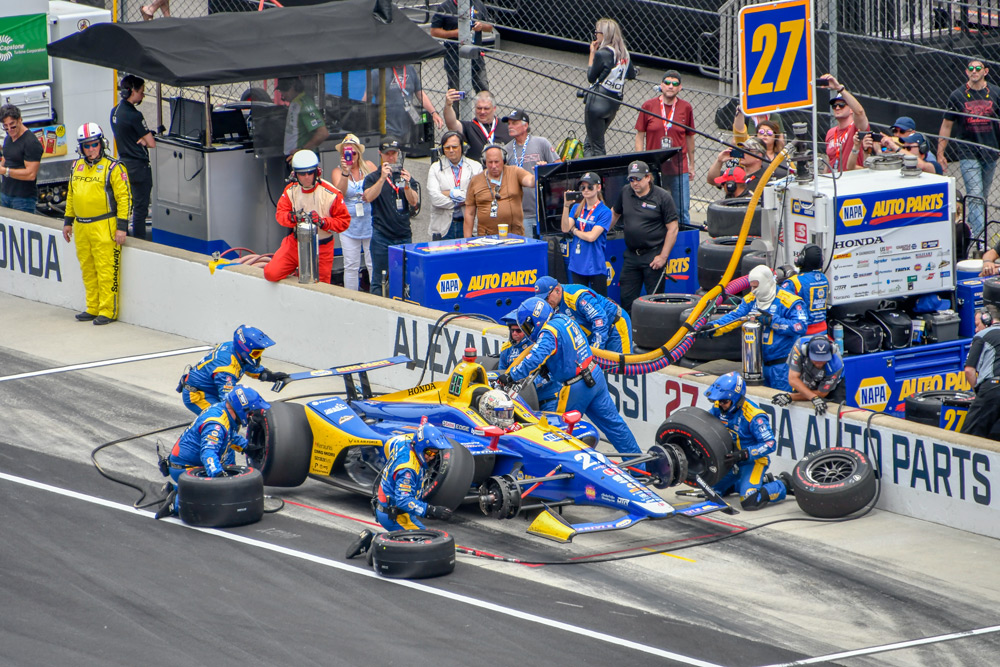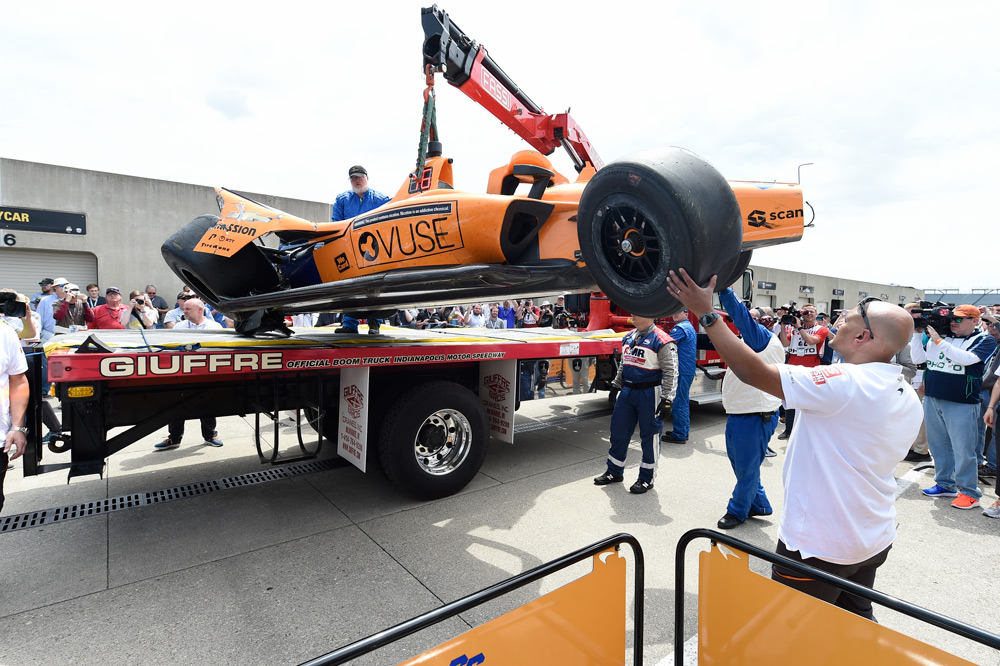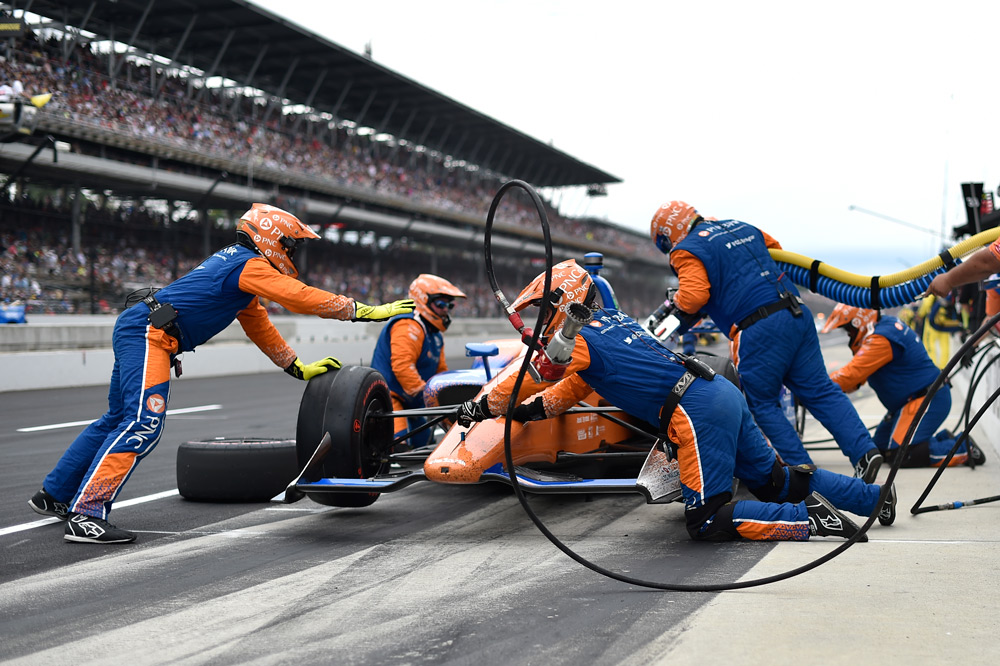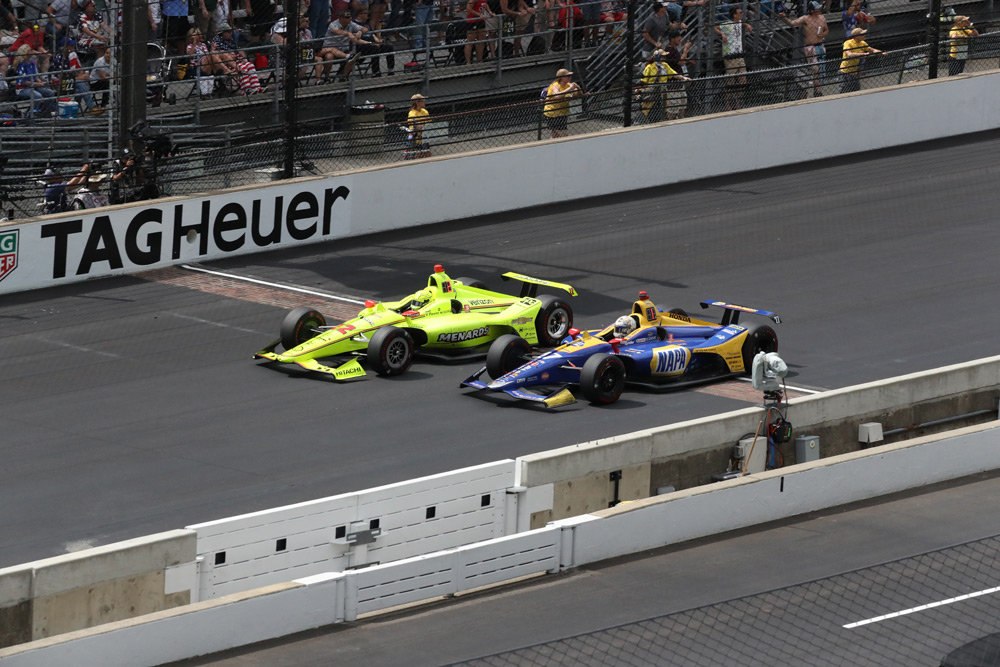The last 13 laps of the 2019 Indianapolis 500 saw a duel between Team Penske’s Simon Pagenaud and Andretti Autosport’s Alexander Rossi. While Rossi had been the ‘mover-and-shaker’ throughout the preceding 187 laps, the money was always on Pagenaud to win, which he did.
The 103rd running of the 500 was a great example of how making your own luck can determine the end result.
Rossi was leading in the late stages of the race when Sebastien Bourdais and Graham Rahal collided resulting in a multi-car crash and the race being red-flagged (stopped). With 13-laps to complete, Pagenaud reclaimed the lead and held off Rossi until the checkered flag.

Rossi didn’t have a quick car, setting the ninth fastest time on pole day. In the Fast Nine shootout (the fastest nine drivers determine the top nine starting positions) he came in ninth.
In the race, Rossi felt the main reason for his defeat was the lack of straight-line speed. Coupled with this was a problem with the fuel-hose not locking into the buckeye in three of his four pitstops, causing further delays. Given this, Rossi could only make the best out of the hand that he was dealt. Arguably he didn’t have a car fast enough for a tilt at the title.
What he did have was an extremely high level of motivation and emotion (some describe it as anger) from what had happened several times during his pitstops that day. This had been the third time in his four Indy 500s that Rossi had been struck by refueling issues in the pits.

Let’s look at McLaren’s failed bid for the Indy 500 title. As McLaren’s CEO Zak Brown admits, there was a snowball effect of mistakes that led to driver Fernando Alonso failing to qualify.
This appeared to start at a test at Texas Speedway leading up to the Indianapolis 500, when the team had problems trying to source a steering wheel. Then came problems with wrong sensors, incorrect gear ratios, confusion over metric/imperials measurements for a set-up. Alonso’s crash in practice again compounded the affects on the team’s ability to have a car capable of qualifying.
“I think I made more than one error,” said Brown. “So it was a variety of errors, and then it becomes a snowball effect. So when you’re not prepared in Texas, you never really recover from that.
“You can look at each individual mistake and kind of critique it, but you can actually point to the mistake before as the cause of the mistake before that.”
Ultimately it is the small mistakes that add up and not necessarily one mistake.

Despite starting from 18th on the grid, Kiwi driver Scott Dixon appeared to be on track for a top five finish. At least he was maximising his limited opportunities by moving up the field albeit by saving fuel and pitting later than other teams. This could have resulted in one less stop than others.
However, starting from 18th always means that their are 17 cars in front of you to get passed, compared with starting on the front row! Seventeen reasons why things can gone wrong and ultimately this happened.
Dixon was caught up in the ensuing melee from the Bourdais/Rahal incident on lap 176. While he escaped being taken out, Dixon was hit from behind resulting in the car becoming stuck in sixth gear. He finished 17th overall.
He did lead 13/200 laps of the race!

Having traded the lead three times in the last 13-laps, Simon Pagenaud won the 103rd Indy 500 title beating Rossi by just 0.2086 seconds.
Simon Pagenaud won the entire month of May, capping of a phenomenal several weeks at Indianapolis Motor Speedway with a victory in the 103rd Indianapolis 500 on Sunday.
The No. 22 Team Penske Chevrolet driver along with the team made their own luck for the entire month of May. Having won the IndyCar Grand Prix on the Indy road course earlier in May, he qualified third fastest in the first qualifying session (Rossi ninth and Dixon 18th). In the Fast Nine shootout for the top nine positions on the starting grid, Pagenaud set the fastest time while Rossi stayed ninth fastest.
After starting out front, Pagenaud led more than half of the 200 laps at the Brickyard before holding off an angry, hard-charging Alexander Rossi.
Dixon won the 92nd running of the Indianapolis 500 back in 2008. Leading up to that race was not to dissimilar to Pagenaud’s 2019 endeavour. Back then, almost the entire month of May was dedicated to the 500 with practice starting on 6th May.
While five days were rained out or limited by the weather, Dixon was fastest in four of the six days of practice and third in the remaining two. He set the fastest time on pole day and then in the race led 115/200 laps to win his first Indy 500 title.
You make you luck not just as a driver, but as a team. Dixon was an example of this in 2008, Pagenaud did it in 2019. They both placed themselves into winning positions early on in the lead up to the race. Unlike McLaren there were few mistakes. They were both the fastest cars out there and that made it easier to place them first over the line.
Main picture is Marcus Ericsson spinning in the pits at the 2019 Indy 500



Comments